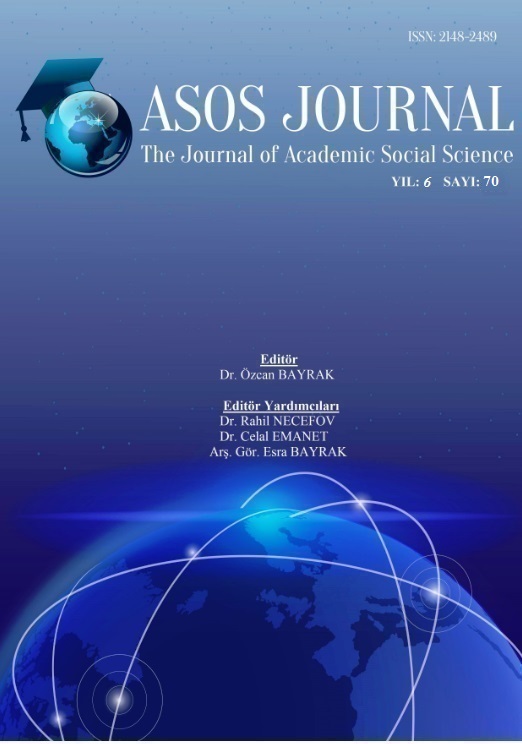Author :
Abstract
Türk-İslam edebiyatı geleneği içerisinde önemli bir edebî tür olan kırk hadisler, ilkin II. asırda Arap edebiyatında mensur olarak karşımıza çıkmaktadır. Zaman içerisinde Farsların İslamiyet’i kabul etmesiyle beraber Fars edebiyatı sahasında mensur, manzum ve mensur manzum olarak kırk hadislerin yazıldığını görmek mümkündür. XIV. Asırda Türk-İslam edebiyatı sahasında örneklerini gördüğümüz kırk hadislerin ilki Mahmud Ali tarafından yazılan Nehcü’l-ferâdis’dir. İranlı ünlü âlim ve edip Molla Abdurrahman Câmî’nin Farsça olarak kaleme aldığı Çihl Hadis eserinin Ali Şir Nevâ’î tarafından XV. Asırda Türkçeye tercüme edilmesi bu yüzyıldan itibaren günümüze değin kırk hadis tarzında edebiyatımızda mensur, manzum ve mensur-manzum yüzlerce eserin yazılmasına olanak sağlamıştır. Hz. Muhammed’den mervî “Ümmetim için din emirlerine dair kırk hadis ezberleyeni, Allah kıyamet günü fakih ve âlim olarak diriltir.” Hadisinden hareketle oluşan bu kabil eserler kimi zaman mesnevi nazım şekliyle, kimi zaman kıta nazım şekliyle bazen de beyit nazım birimiyle tercüme ve telif olarak edebiyatımızda karşılık bulmuşlardır. Türk şiirinin çığır açıcılarından olan Nevâyî’nin, açmış olduğu bu yoldan Fuzûlî, Usûlî, Nev’î, Hakânî ve Nâbî gibi Türk şiirinin her biri kendi sahasında ekol sahibi olan müelliflerimiz kırk hadis tarzında eserler kaleme almışlardır. Dünden bugüne kırk hadisler üzerine kitap, tez ve makaleler yazılmış, türe ait örnekler ortaya konulmuş böylece bu yeni çalışmalarla edebiyatımızda kırk hadis literatürünün zenginliği ortaya konulmuştur. Edebiyatta şair ve yazarları tanıma ve onlarla ilgili değerlendirmede bulunmak için ortaya koydukları eserler oldukça önemlidir. Diğer bir deyişle eserlerini inceleyebildiğimiz oranda onları tanımış oluruz. Eserini ele aldığımızın şairin adı ve kimliği ile alakalı eserde herhangi bir bilgi yer almamaktadır. Eserde zikredilen 1586-87 tarihi ve Sultan Murad ismi şairimizin yaşadığı dönemle alakalı bazı ipuçları sunmaktadır. Bu bilgilerden hareketle şairimiz XVI. Yüzyılın son yarısı ile XVII. Yüzyılın ilk yarısında yaşadığını söylemek mümkündür. Eserin tespit edilen tek nüshası Amasya Yazma Eserler Kütüphanesinde yer almaktadır. Eserin baş kısmında 80 beyitlik bir mesnevi yer almaktadır. Ardından hadislerin Arapçası ve onların kıta nazım şekliyle Türkçeye çevirisi yer almaktadır. Eserin son kısmında 16 beyitlik bir münacaat ve yine 16 beyitlik bir naat yer almaktadır. Çalışmada ilgili kırk hadis tercümesinin transkripsiyonlu metninin yanı sıra bu metnin içeriği hakkında bilgi verilmektedir.
Keywords
Abstract
Forty hadiths, an important literary genre within the tradition of Turkish-Islamic literature, first emerged as prose in Arabic literature in the beginning of the 2nd century. Over time, as a result of acceptance of Islam by Persians, it was possible to see forty hadiths written as prose, poetry and prose poetry. The examples of forty hadiths were seen in the field of Turkish-Islamic literature in the 14th century. The first one of them was Nehcü’l-ferâdis, which was written by Mahmud Ali. The translation of Çihl Hadis into Turkish, originally written by the famous Iranian religious scholar and literary man Mullah Abdurrahman Câmî, in the 15th century made it possible to see hundreds of works of prose, poetry and prose poetry in our literature using the style of Forty Hadiths. Considering the following hadith of Muhammad (PBUH) "Whosoever memorizes and preserves for my people forty hadith relating to his religion, Allah will resurrect him on the Day of Judgement as a jurist and religious scholar", these works found response in our literature sometimes in the form of mathnawi poetic form, sometimes in the form of quatrain, or sometimes in the couplet form via being translated and written. Following one of the seminal authors of Turkish poetry, Nevâyî, many prominent authors who have own school in his respective field in Turkish poetry, such as Fuzûlî, Usûlî, Nevîî, Hakânî and Nâbî produced numerous works in the form of forty hadiths. Books, dissertations and articles have been written on forty hadiths and examples regarding the genre have been produced from past to today. Thus, the richness of the forty hadiths literature has been revealed through new studies in our literature. Works of poets and authors are quite important in order to know and evaluate them. In other words, we would be able to know them as much as we analyze their works. Any information regarding the name and identity of the author whose work discussed in this study is not found in the work. The date 1586-87 and the name Sultan Murad found in the work present some clues regarding the period in which the author lived. Based on this, it is possible to state that the author lived in between the last half of the 16th century and the first half of the 17th centuries. The only identified manuscript of the work is found in Amasya Manuscripts Library. A mathnawi consists of 80 couplet is located in the top of the work. Subsequently, Arabic forms of hadiths and their translation to Turkish in the form of quatrain are situated. A prayer to God and a poem praising the Prophet Muhammad, both consist of 16 couplets, are located in the end of the work. This study provides translation of the concerned forty hadiths with transcription of the text and gives information about the content of the text.





